Curiosity and the cats
Our strangely visceral relationship with feral felines
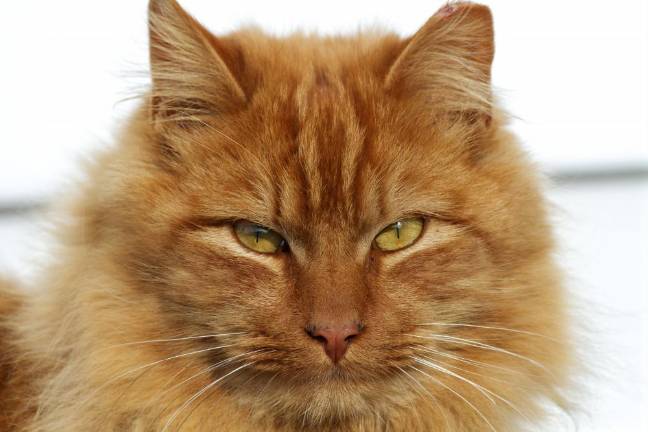
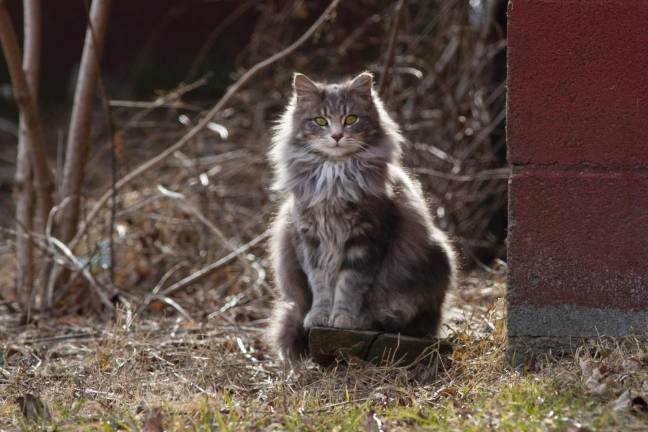
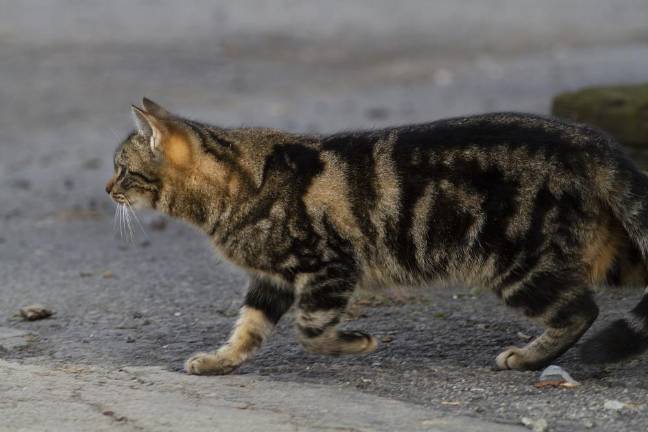
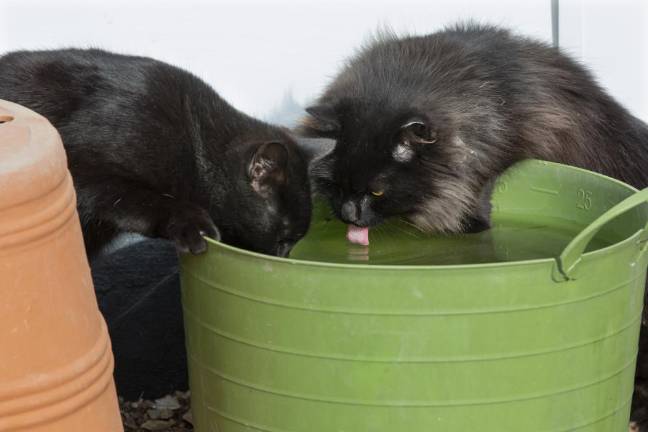
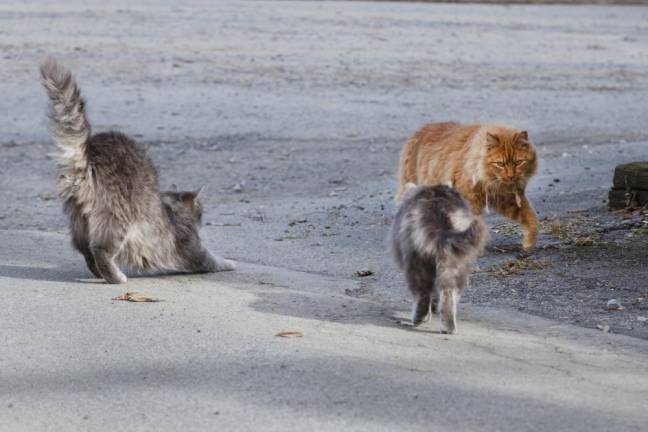
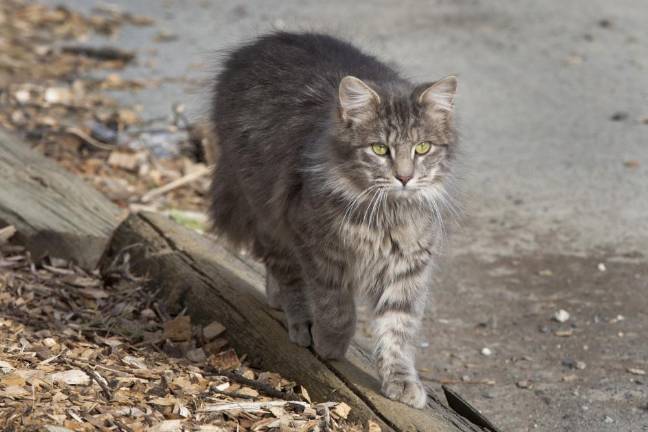
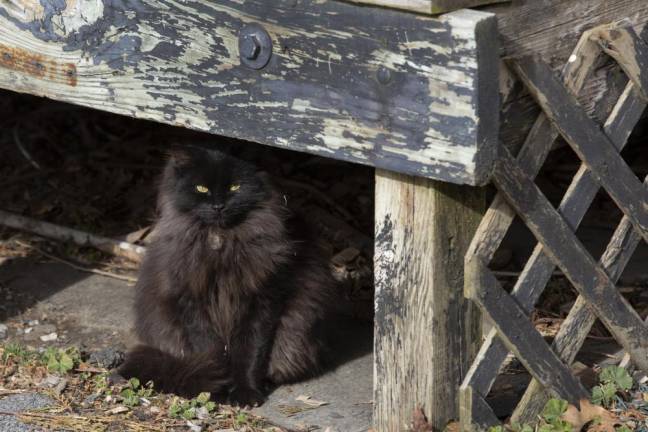
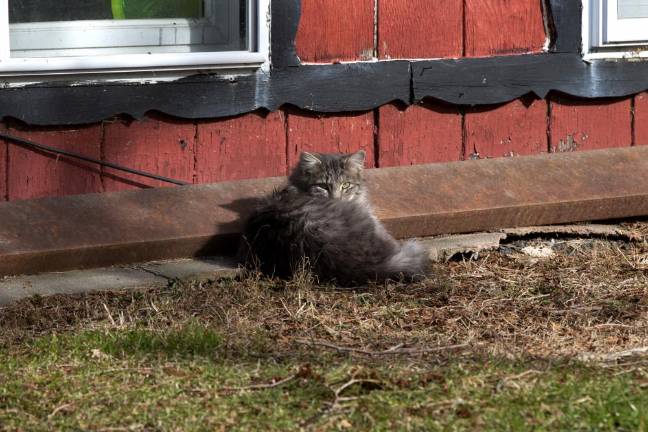
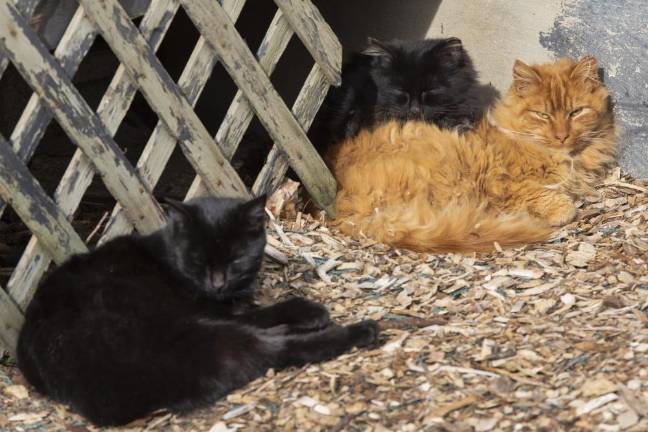
It seemed simple enough. I wanted to write about the three feral cats prowling the neighborhood. I figured it would be another chance to muse about places and creatures that live on the edge. These three, a tabby, a brindle and a black and white, have been around for several years. They may live beneath my barn with those skunks and possum or they may be free-roaming house cats. Recently, one was playing with a deer browsing in my yard.
A couple times a week, we’ll cross paths unexpectedly. We both stop. The cat stares, glares: “Are you looking at me?”
“No,” I mumble and run away.
The story gets complicated quickly. These are three of the 80 million feral cats in the U.S. that live in colonies called “clowders” or “pounces.” Then again, they may be neighbors’ house cats, allowed out each day to “roam” or really, hunt, which, depending on where you live, may be against the law. Or they might be strays – lost domestic cats – already socialized to humans and dependent on them. Only one seems unhealthy. Truly feral cats are unsocialized and likely fear humans, even though they too may become dependent on human help. They’re prone to getting injured or infected interacting with other wild animals and often live short lives, sometimes just two years, in a state of disease or affliction.
I started asking around about feral cats and everybody seemed to have information, opinions, pictures on their phones. Feral cats, I realized, constitute a unique friction point where wilderness bumps up against civilization, unraveling a mass of conflicting notions of care and nature.
“The cats seem to have found me,” said Connie Dorsey. Eight years ago, when she was living in the Village of Warwick, an elderly neighbor had been supporting a large colony of 10 to 15 feral cats on Church Street. When the woman got sick and went to a nursing home, Dorsey got involved to help manage and relocate the cats. The work is completely absorbing, she said. It’s also never-ending. Dorsey has five on her Warwick Town property living outside, two more living inside, and she goes daily to the old Church Street area to feed two that wouldn’t leave. She has gotten all of them spayed and neutered. “It’s not just about a few kibbles,” she said.
Ten years ago, the Village of Warwick, because of its relative density, developed a surprisingly explicit and strict set of regulations on cats and human interaction. According to The Cat Control Act of the Village of Warwick, cats must be licensed and fenced in, and it’s a no-no to leave food out unless the feeding is done in your “immediate and constant presence.” The rules lowered the number of cats that can live on a single premises from 12 to five, which is easier said than done.
“Working farms near senior housing” create the perfect storm for growing feral cat colonies, said Warwick Mayor Michael Newhard. Elderly people like to take care of cats. Many area farmers with barns near the road often find cats dropped off, with a bag of food and a dish.
Warwick Building Inspector Boris Rudzinski, who’s also the named “cat officer” for the Village, has written a few warning letters and issued a summons or two to residents in a senior housing complex who had “created a hotel for feral cats just outside the common entry areas. It wasn’t fair to all the other people.”
“The misguided act of dropping a domestic cat off at a barn of feral cats is almost surely a death sentence,” said Warwick Valley Humane Society president Susan Barron. “They are not equipped to survive the fights, disease and other dangers of such a place.” If they live to reproduce, on the other hand, that creates its own set of problems.
Cats breed quickly, causing overpopulation and suffering. The International Union for the Conservation of Nature lists cats among “the world’s worst non-native invasive species” because all cats, whatever they are called – indoor, barn, feral, so cute, free-roaming, unowned, alley or stray – are born hunters, responsible for the extinction of 33 bird species and yearly deaths of 12 billion small mammals and 2 billion birds. (Writer Margaret Atwood calls for enclosed “catios” where a cat can be outside, safe and yet keeping birds safe too.) Cats are surplus hunters, like humans and raccoons, killing more than they can eat. They kill from instinct, attracting rats, buzzards and other scavengers to eat their leftovers.
Dan Doyle, owner of Brakewell Steel in Chester, NY, didn’t expect to inherit a feral cat colony when he bought a 48-acre farm in Warwick with a big red barn across from the town park. These days, about 20 feral cats live in the barns on the property, where he has put in a disc golf course. “There have been up to 30,” he said. He feeds them twice a day, and tries to catch them in Havahart traps and get them fixed.
“It takes quite a while to catch them!” he said. So far he’s wrangled about 10. It's a very time-consuming process, he said, and it gets more time-consuming by the month because invariably the cats that want to go into the traps are ones that have already been spayed or neutered. “I have to stand there, not too close and not too far away from the traps to encourage the ones I want in the trap and discourage” the repeats.
He spends about $75 per month on food on top of the cost of spaying and neutering through The Animal Rights Alliance (TARA), a mobile cat clinic. He’s given kittens away to members of the disc golf community, including one in Putnam County who has been particularly helpful getting them comfortable with humans, then adopting them out.
“I have a love-hate relationship with the cats,” said Doyle. On the upside, the cats have completely taken care of the rats that had been attracted by the chicken feed in the barn. Before the cats found their way to his place, the rats had become so numerous that he’d been catching them in his house.
“I also have a bit of a guilty conscience because I recognize that I wasn’t handling the issue responsibly for too long. I didn’t address the exploding population until I had more cats than was proper... Now that I'm getting a better grip on controlling the population it's a bit more enjoyable.”
Gwen Schaffer, 80 and her partner Milt Mesirow, 84, of Pine Island, have had cats around forever, but they weren’t looking to replace their last cat after it passed away. They were ready to be done. But it turned out that cats were not done with them. First they were willed one, Sammy, by a dear friend who died. Most “owned” cats are obtained this way, through friends or family members, or else rescued or adopted from shelters; under10 percent are purchased at pet shops.
Then they started feeding one that had been hanging around. “We got all kinds of animals coming through,” said Mesirow. “But the cats we took a shine to.”
“Then came the mother, the father,” said Schaffer. Now there are five felines in the household: Sammy, who doesn’t go outside, and four outdoor cats that don’t come inside, which Schaffer thinks might spend their nights in the church next door.
The couple called in a cat wrangler, Jill Wojtaszek, from Port Jervis, to trap them to bring to the vet, to be fixed and given their rabies shots. “She was a godsend,” said Schaffer. “Luckily our across the street neighbors helped us with the bill.”
The pair, both retired artists, are living on half a social security check. “We’re feeding them,” said Mesirow, “but if anything happens that they have to go to a vet, we’re in dire straits. I don’t know what’s going to happen next.”
The cats do work for a living, said Schaffer, eating the mice and voles that eat through the wiring of the couple’s antique cars. “Poor Sammy doesn’t get that nourishment,” said Mesirow. Like many a domestic cat, he only hunts in his dreams.
The Warwick Valley Humane Society, the largest animal shelter in Orange County, is often at capacity and like other shelters has to euthanize some animals. Not healthy animals, though, said Barron, but usually those which are sick, dying or in some way unsafe. Despite a very positive adoption rate – of 98 percent for dogs and 79 percent for cats – the Warwick shelter has been over capacity for several years and is well on the way to building a new $1.9 million facility, not to take in more animals, but provide better, appropriate care for the ones they already have.
Humans subsidize cats. A third of American households harbor one, reports Scientific American. Cats cast a spell.
Both our family cats have been strays. They showed up, cast that pretty kitty incantation and, poof, they were invited in. The first, Juniper, had a bad case of fleas that got all over the house. After a summer vacation when she was left outside, and cared for, she was gone when we got back. The next stray, imaginatively named Kitty, was quite successful at integrating into our household for several years and is buried in the woods behind the barn after a natural death. She was already declawed, which is yet another discussion about feline-human relations.
Perhaps that Toxoplasma gondii – a parasite that all cats host – in the human brain causes a kind of sympathy: Oh poor kitty! Here’s a cozy sleeping box (and three others to choose from, some food, oh and some toys and a virgin wool muffler. Smile, you’re on YouTube!) Humans may actually be the dependent species. Cats clearly help give human life meaning and purpose.
In return, we tip the scales in their favor. Cat predators include coyotes, hawks, bobcat, fishercats, foxes and cars, but cats with human patrons live in an unnatural situation where the normal predator-prey relationship does not maintain a balance.
Cat people and ecologists differ on plenty, but they agree on one thing: there are just too many free-roaming cats around. For the cat people, overpopulation degrades the lives of them all; for the ecologists, it is an unnatural threat to many species of birds, insects and mammals — including us.
Thanks to the t. gondii parasite, which is passed through cat urine or scat to other mammals, humans can get toxoplasmosis from unwashed garden fruits and vegetables, contaminated sandboxes and the undercooked meat from infected animals. It is very common, but with a normal immune system, it remains harmless. Maybe. There are studies around that are more grim, linking toxoplasmosis to many of the psychological ills of modern society. Cats can also carry rabies. An unfortunate scratch or nip from an unknown cat may require a full painful routine of rabies treatment. In 2016, a sickly cat in Greenwood Lake was found to carry rabies.
The cat population is manipulated by humans and it can be fixed — by management, which might include extermination, like in Australia where one state has gone so far as to offer a $7 bounty per feral cat skull. Less draconian is the favored push in the U.S. to TNR: Trap, Neuter and Release them back to the wild. Ecologists point out that just a few non-cooperators or rogues can minimize the effect of this approach.
Humans meddle and have a remarkable, resilient capacity to ignore consequences. We are skilled at selective perception, passionately embracing realities independent of “facts.” For many, the Feral Cats Problem is just the next “Silent Spring” du jour, after road salt, manure runoff into water supplies, mothballed nuclear plants, estrogen leeching from plastic water bottles, lead paint, mold, plastic in the ocean, helium balloons, radon, Superfund sites, decommissioned nuclear reactors, leaking landfills.
The good news is, when it comes to owning the way we humans meddle, small steps can have an outsized impact. Keep cats indoors, especially during bird nesting season — if you possibly can. "I did keep one inside for as long as I could but it did not go well, they are feral," said Micki Bridge, of Chester. She built a heated house for the two feral cats that showed up, and feeds them a warm meal twice a day.
"What would be nice is if everyone who told me to [keep them inside] would get in their car and come pick them up and take them home to their house," said Bridge, "but nobody is willing to. So I vet them, feed them and do my best to keep them from multiplying."
“If you feed ‘em, fix ‘em,” said Susan Barron of the Warwick Valley Humane Society. There are neutering and vaccination services around here for as little as $20. And if you do feed cats outdoors, don’t just throw the occasional table scraps in the yard. “Do it at the same time every day,” said Barron, “so the cats learn when to come and the food won’t be left out all the time to feed other animals.”